There might be a good system in here trying to get out – but it will have to get past its own subwoofer first.
Pros
- Sonic scale belies its physical size
- Ample low-frequency presence
- Great control app
Cons
- Sound is pear-shaped
- Mediocre rhythmic expression
- Unforgiving at volume
-
Power1050 watts of Class D power -
File supportCompatible with 32bit/768kHz and DSD128 digital audio files -
StandsAdaptable integrated stands -
ConnectivityWi-Fi, Apple AirPlay and Bluetooth
Introduction
“Small”, as has long been established, “is beautiful”. In the case of the Cabasse Pearl Keshi, a high-resolution all-in-one 2.1 audio system, “small” doesn’t preclude “expensive”, either.
The world isn’t short of ambitious all-in-one setups from auspicious and long-established brands, of course, but ambitious spherical all-in-one setup? They’re in shorter supply.
Of course, it takes a bit more than some oddball (no pun intended) looks and a lengthy spec sheet to produce a worthwhile system. So does the Cabasse have it where it really counts?
Availability
- UKRRP: £2299
- USATBC
- EuropeRRP: €2499
- CanadaTBC
- AustraliaRRP: AU$4399
The Cabasse Pearl Keshi is on sale now, and in the UK it’s yours for £2299. In the Eurozone it costs €2499, and in Australia it’s priced at AU$4399. Currently, there’s no confirmation the product will reach the US; if it does (and if exchange rates are anything to go by), expect to pay $2899 or thereabouts.
That’s quite a lot for a 2.1 speaker system, even one from a brand with the cache of Cabasse. But then the Pearl Keshi isn’t just a speaker system – it’s a self-contained, hi-res audio system. So perhaps that price isn’t as optimistic as it might at first appear.
Design
- Useful, adaptable integrated stands
- Compact and discreet
- Properly built and finished
You can rely on Cabasse for a few things. A premium price, for example; gleeful over-engineering; and spheres – the company has always been very big on spheres.
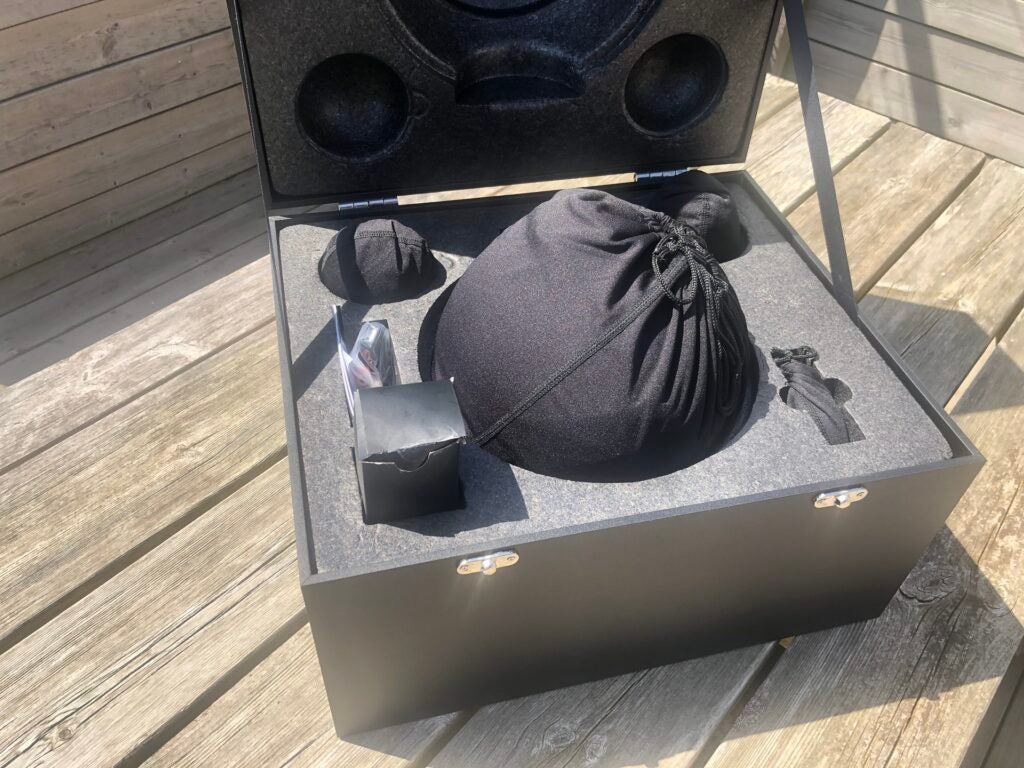
So your £2299 buys you three spheres, two small ones (10 x 8 x 8cm, 550g) that connect to a larger one (24 x 22 x 27cm, 6kg). Each has its own chromed, integrated hoop stand. In the case of the two little satellite speakers, they can click through eight different positions to ensure they’re firing at your listening position no matter where they’re positioned.
The satellites connect to the bigger subwoofer/amplifier/engine of the system using banana plugs. They’re each hard-wired to a 3m length of relatively chunky speaker cable, which is helpful – unless you want to put the satellites particularly close to the sub, in which case you’ll have quite a lot of cable to conceal.
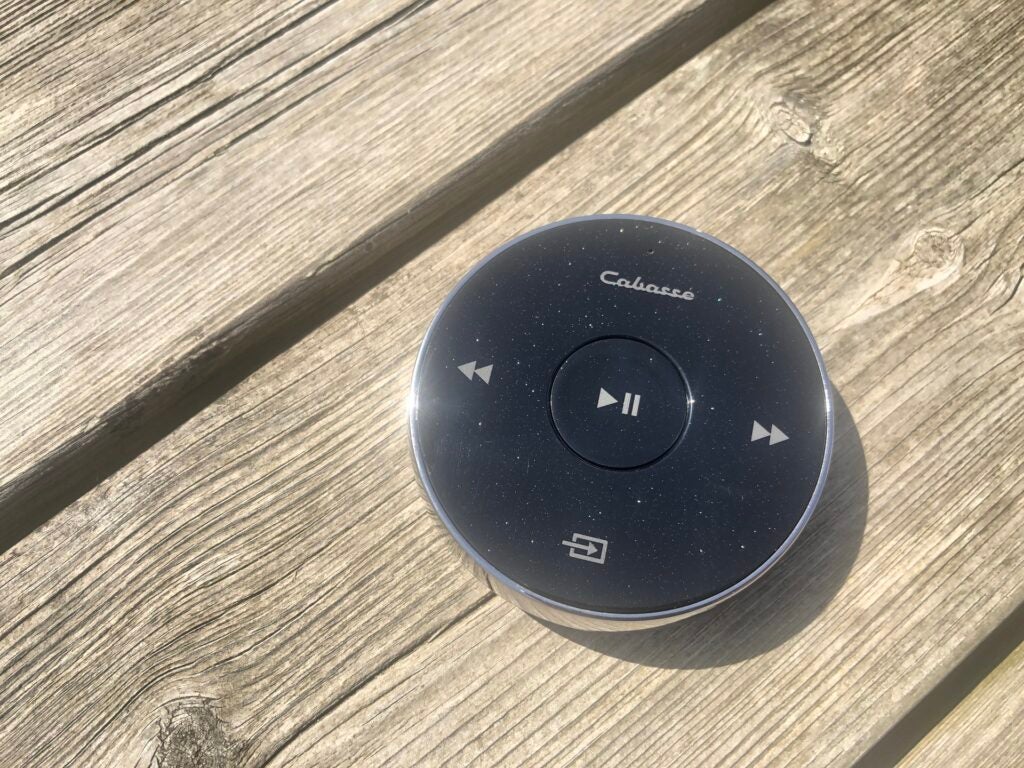
The Pearl Keshi is available in black or white. Both finishes are matte, and both look pretty good in a sort of sophisticatedly understated way. The quality of build and finish is impressive, too – except for the shiny “Cabasse” logo on the subwoofer, which looks and feels a bit low-rent by comparison.
Features
- 1050 watts of power
- Compatible with the highest of hi-res standards
- Crying out for an HDMI input
As is Cabasse’s wont, the satellite speakers are a coaxial design. Inside the spherical metal cabinet, behind the mesh grille, there’s a mid-range driver with a tweeter in its centre. This arrangement is intended to deliver high-quality focus and time alignment – the fact that it allows Cabasse to engineer a spherical speaker is almost certainly a happy coincidence.
As well as featuring a downward-firing 17cm bass driver in order to do its bassy thing, this system’s subwoofer is the brains of the entire outfit. It turns out 300 watts of Class D power for each satellite speaker and keeps an equally significant 450 watts for itself.
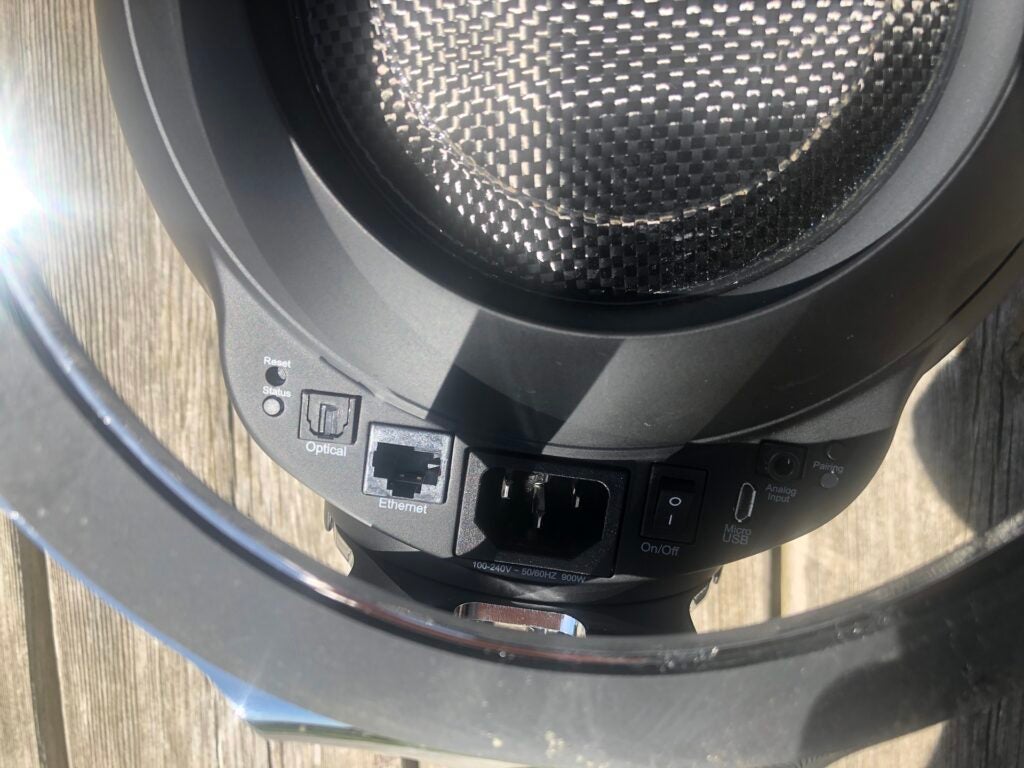
It’s capable of dealing with every worthwhile digital audio file type and is equipped to handle files up to a giddy 32bit/768kHz and DSD128 resolution. There are physical inputs (Ethernet, micro-USB, digital optical and 3.5mm analogue) for connecting external sources, and wireless connectivity via Wi-Fi, Apple AirPlay and Bluetooth.
Wireless streaming from network-attached storage happens via UPnP, but it’s also possible to integrate your favourite music-streaming service into the splendid StreamControl app. Cabasse has played a blinder here: the control app is stable, extensive (it includes room calibration, for example, and the ability to integrate the Pearl Keshi into your Amazon Alexa or Google Home ecosystem) and logical. There are any number of alternatives from any number of similarly resourced manufacturers that don’t get anywhere near this kind of usability.
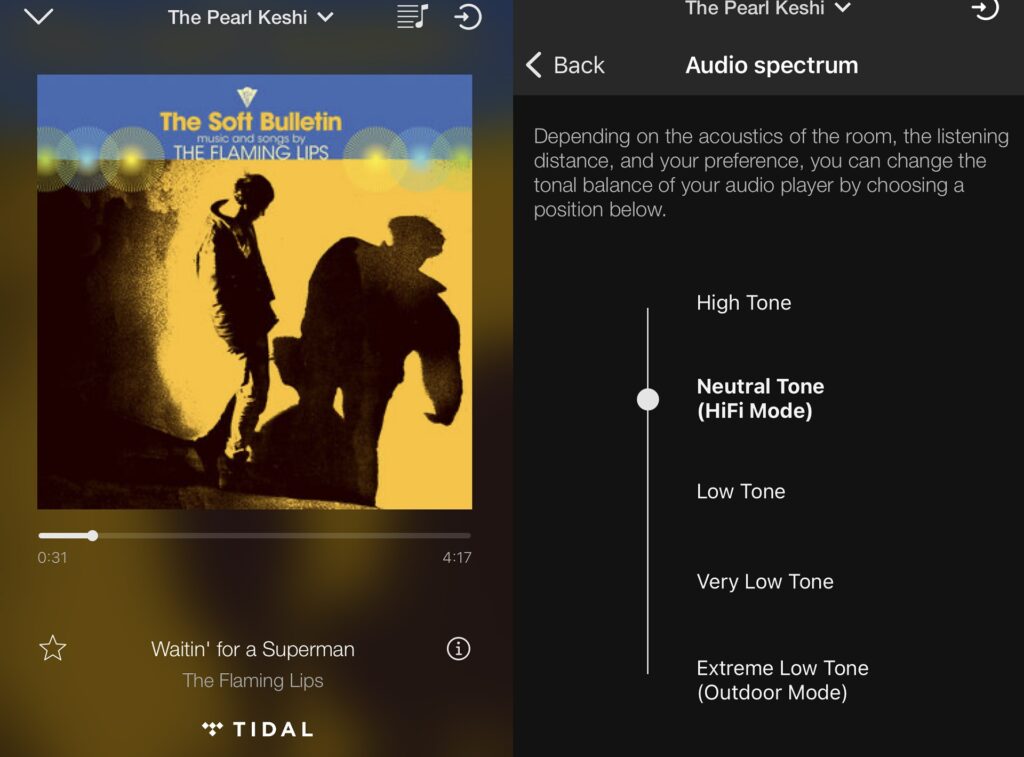
The remote-control handset, by way of contrast, is mostly style and only a little substance. A chunky circular puck (place your bets on how long it took Cabasse to realise a sphere would be impractical) with a rotating dial around the edge dealing with volume, it delivers limited functionality. And it operates via Bluetooth, which is good news for battery life but very bad news indeed for whoever has to grope under the subwoofer to re-pair it when it inevitably loses its connection.
Sound Quality
- Punch and dynamism to spare
- Prodigious low-frequency presence
- Sound is fundamentally skewed
Newton’s third law, as we all know, suggests that for every action there is an equal and opposite reaction. He almost certainly didn’t have premium all-in-one audio systems in mind, true, but for every audio talent the Pearl Keshi demonstrates, there’s another sonic discipline at which it falls flat on its face – which is sort of the same thing, isn’t it?
On the plus side, the Cabasse – as the spec-sheet strongly suggests – offers ample audio presence and can develop a prodigious amount of bass. It’s dynamic in the most forthright sense, is more than happy to play at oppressive volume, and creates a coherent soundstage as it does so. If the “shock and awe” aspects of music-making appeal to you, the Pearl Keshi may well excite you. And its ability to sound so very large while being so very little isn’t to be sniffed at, either.
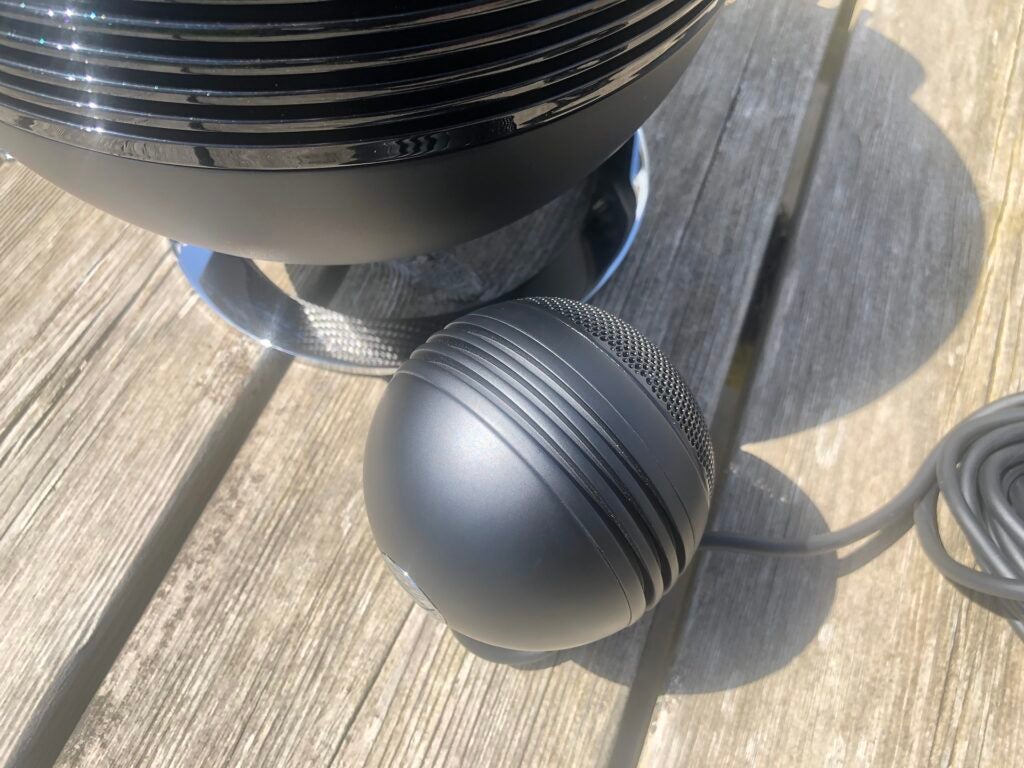
A listen to Waitin’ for a Superman by The Flaming Lips via Tidal allows the Cabasse to show what it’s made of, for good and bad. There are some extremely deep bass notes in this recording; some of them are so deep that they’re ignored by the overwhelming majority of systems, no matter the asking price.
They don’t elude the Pearl Keshi, though – the subwoofer identifies and delivers them with the required thump. Stereo focus is good, which means the vocal sits convincingly in the middle/front of the stage and every other element of the recording enjoys a little pocket of space in which to do its thing.
The same recording strongly demonstrates just how pear-shaped, or bottom-heavy, the Pearl Keshi’s presentation is. The contest between two small satellite speakers and a hefty subwoofer looks like a mis-match on paper, and that’s how it proves in practice.
The app allows for room calibration and features an “audio spectrum” five-stage EQ adjuster; but in reality, it’s all in vain: the subwoofer dominates proceedings, and constantly draws attention to itself. It doesn’t help that the volume control in the app seems a little lop-sided, too; reducing volume from, say, 50% to 25% doesn’t appear to reduce the sub’s output as much as it does that of the speakers.
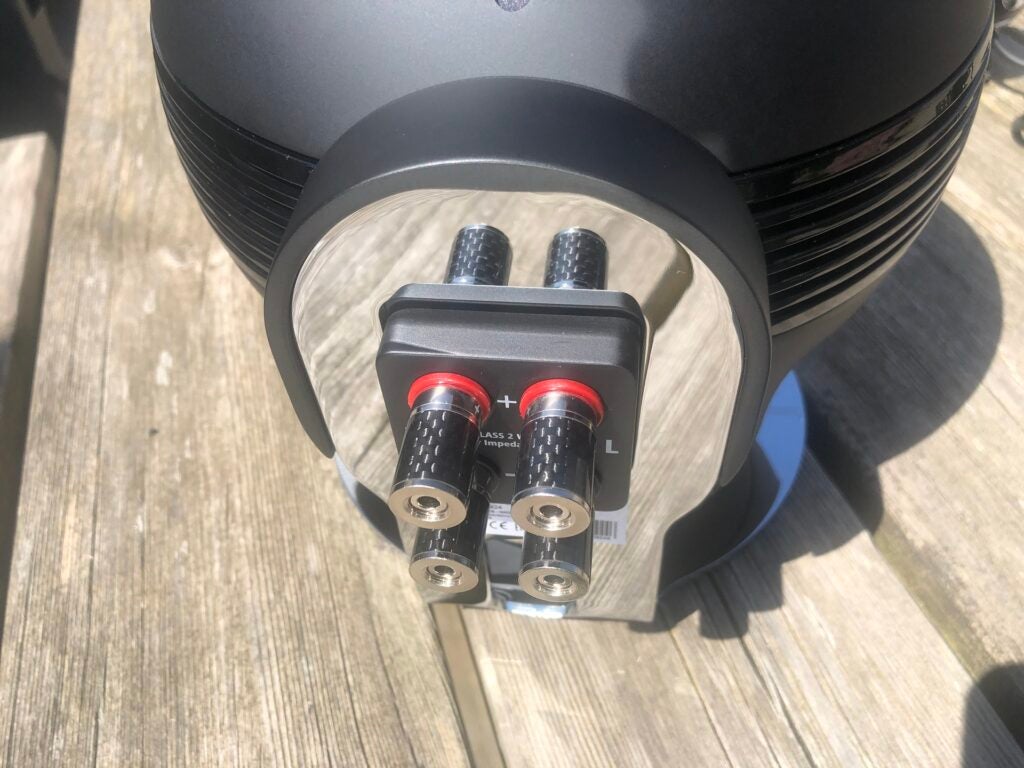
Mind you, you’re unlikely to be listening at big volumes for long anyway. Even at modest levels, the satellite speakers glint rather threateningly. The higher frequencies are quite sharp and edgy, and this attitude becomes more overt the louder you listen. “Hard” is seldom a positive description of an audio presentation, and that’s true here.
The overconfidence of the subwoofer makes for rather lumpy expression of rhythms, too. Plodding is fine when you’re listening to The Flaming Lips, but switching to Marvin Gaye’s Inner City Blues (Make Me Wanna Holler) quite cruelly expose the Cabasse’s tendency to stomp when it ought to glide.
Ultimately, considerable dynamic headroom and fearsome low-frequency presence don’t make up for a lack of finesse and a fundamentally skewed tonal response.
Latest deals
Should you buy it?
You want big sound from a small system ‘Big’ is to understate the Cabasse’s potency somewhat.
You’re expecting sonic fidelity The Pearl Keshi interprets music on its own terms.
Final Thoughts
If you want a discreet-yet-handsome all-in-one system, or a wildly over-specified desktop audio setup, you might think the Cabasse Pearl Keshi high-resolution 2.1 system is just the ticket. As far as “just add a smartphone and some mains power” plug-and-play convenience goes, it’s as good as these things ever get, certainly – and where visual impact is concerned, it’s a conversation-starter at the very least. But its sound is unnatural and unconvincing.
How we test
We test every speaker system we review thoroughly over an extended period of time. We use industry standard tests to compare features properly. We’ll always tell you what we find. We never, ever, accept money to review a product.
Tested for more than a week
Tested with a range of music
FAQs
The Pearl Keshi supports MP3, AAC, WMA, WAV, AIFF, FLAC, ALAC up to 24bit/192kHz, and DSD 64/128, WMA lossless.
Qobuz, Deezer, Napster, Spotify Tidal and Vtuner.
Sustainability
Trusted Reviews’ holds the fact that global warming is not a myth as a core value and will continuously endeavour to help protect our planet from harm in its business practices.
As part of this mission, whenever we review a product we send the company a series of questions to help us gauge and make transparent the impact the device has on the environment.
We currently haven’t received answers to the questions on this product, but will update this page the moment we do. You can see a detailed breakdown of the questions we ask and why in our sustainability info page.
Jargon buster
AirPlay 2
AirPlay 2 is the second generation of Apple’s proprietary wireless streaming tech, which is built into all of its hardware products (and supported by many others). It’s designed to pass content from your Apple device – music, video and photos – to a compatible receiver over your Wi-Fi network such as a TV, wireless speaker, AV receiver etc.
Bluetooth
Bluetooth – named after 10th-century Danish king Harald Bluetooth who united Denmark’s tribes into a single kingdom – is a method of wireless transmission that allows for the exchange of data between devices over short distances.
There might be a good system in here trying to get out – but it will have to get past its own subwoofer first.
Pros
- Sonic scale belies its physical size
- Ample low-frequency presence
- Great control app
Cons
- Sound is pear-shaped
- Mediocre rhythmic expression
- Unforgiving at volume
-
Power1050 watts of Class D power -
File supportCompatible with 32bit/768kHz and DSD128 digital audio files -
StandsAdaptable integrated stands -
ConnectivityWi-Fi, Apple AirPlay and Bluetooth
Introduction
“Small”, as has long been established, “is beautiful”. In the case of the Cabasse Pearl Keshi, a high-resolution all-in-one 2.1 audio system, “small” doesn’t preclude “expensive”, either.
The world isn’t short of ambitious all-in-one setups from auspicious and long-established brands, of course, but ambitious spherical all-in-one setup? They’re in shorter supply.
Of course, it takes a bit more than some oddball (no pun intended) looks and a lengthy spec sheet to produce a worthwhile system. So does the Cabasse have it where it really counts?
Availability
- UKRRP: £2299
- USATBC
- EuropeRRP: €2499
- CanadaTBC
- AustraliaRRP: AU$4399
The Cabasse Pearl Keshi is on sale now, and in the UK it’s yours for £2299. In the Eurozone it costs €2499, and in Australia it’s priced at AU$4399. Currently, there’s no confirmation the product will reach the US; if it does (and if exchange rates are anything to go by), expect to pay $2899 or thereabouts.
That’s quite a lot for a 2.1 speaker system, even one from a brand with the cache of Cabasse. But then the Pearl Keshi isn’t just a speaker system – it’s a self-contained, hi-res audio system. So perhaps that price isn’t as optimistic as it might at first appear.
Design
- Useful, adaptable integrated stands
- Compact and discreet
- Properly built and finished
You can rely on Cabasse for a few things. A premium price, for example; gleeful over-engineering; and spheres – the company has always been very big on spheres.

So your £2299 buys you three spheres, two small ones (10 x 8 x 8cm, 550g) that connect to a larger one (24 x 22 x 27cm, 6kg). Each has its own chromed, integrated hoop stand. In the case of the two little satellite speakers, they can click through eight different positions to ensure they’re firing at your listening position no matter where they’re positioned.
The satellites connect to the bigger subwoofer/amplifier/engine of the system using banana plugs. They’re each hard-wired to a 3m length of relatively chunky speaker cable, which is helpful – unless you want to put the satellites particularly close to the sub, in which case you’ll have quite a lot of cable to conceal.

The Pearl Keshi is available in black or white. Both finishes are matte, and both look pretty good in a sort of sophisticatedly understated way. The quality of build and finish is impressive, too – except for the shiny “Cabasse” logo on the subwoofer, which looks and feels a bit low-rent by comparison.
Features
- 1050 watts of power
- Compatible with the highest of hi-res standards
- Crying out for an HDMI input
As is Cabasse’s wont, the satellite speakers are a coaxial design. Inside the spherical metal cabinet, behind the mesh grille, there’s a mid-range driver with a tweeter in its centre. This arrangement is intended to deliver high-quality focus and time alignment – the fact that it allows Cabasse to engineer a spherical speaker is almost certainly a happy coincidence.
As well as featuring a downward-firing 17cm bass driver in order to do its bassy thing, this system’s subwoofer is the brains of the entire outfit. It turns out 300 watts of Class D power for each satellite speaker and keeps an equally significant 450 watts for itself.

It’s capable of dealing with every worthwhile digital audio file type and is equipped to handle files up to a giddy 32bit/768kHz and DSD128 resolution. There are physical inputs (Ethernet, micro-USB, digital optical and 3.5mm analogue) for connecting external sources, and wireless connectivity via Wi-Fi, Apple AirPlay and Bluetooth.
Wireless streaming from network-attached storage happens via UPnP, but it’s also possible to integrate your favourite music-streaming service into the splendid StreamControl app. Cabasse has played a blinder here: the control app is stable, extensive (it includes room calibration, for example, and the ability to integrate the Pearl Keshi into your Amazon Alexa or Google Home ecosystem) and logical. There are any number of alternatives from any number of similarly resourced manufacturers that don’t get anywhere near this kind of usability.

The remote-control handset, by way of contrast, is mostly style and only a little substance. A chunky circular puck (place your bets on how long it took Cabasse to realise a sphere would be impractical) with a rotating dial around the edge dealing with volume, it delivers limited functionality. And it operates via Bluetooth, which is good news for battery life but very bad news indeed for whoever has to grope under the subwoofer to re-pair it when it inevitably loses its connection.
Sound Quality
- Punch and dynamism to spare
- Prodigious low-frequency presence
- Sound is fundamentally skewed
Newton’s third law, as we all know, suggests that for every action there is an equal and opposite reaction. He almost certainly didn’t have premium all-in-one audio systems in mind, true, but for every audio talent the Pearl Keshi demonstrates, there’s another sonic discipline at which it falls flat on its face – which is sort of the same thing, isn’t it?
On the plus side, the Cabasse – as the spec-sheet strongly suggests – offers ample audio presence and can develop a prodigious amount of bass. It’s dynamic in the most forthright sense, is more than happy to play at oppressive volume, and creates a coherent soundstage as it does so. If the “shock and awe” aspects of music-making appeal to you, the Pearl Keshi may well excite you. And its ability to sound so very large while being so very little isn’t to be sniffed at, either.

A listen to Waitin’ for a Superman by The Flaming Lips via Tidal allows the Cabasse to show what it’s made of, for good and bad. There are some extremely deep bass notes in this recording; some of them are so deep that they’re ignored by the overwhelming majority of systems, no matter the asking price.
They don’t elude the Pearl Keshi, though – the subwoofer identifies and delivers them with the required thump. Stereo focus is good, which means the vocal sits convincingly in the middle/front of the stage and every other element of the recording enjoys a little pocket of space in which to do its thing.
The same recording strongly demonstrates just how pear-shaped, or bottom-heavy, the Pearl Keshi’s presentation is. The contest between two small satellite speakers and a hefty subwoofer looks like a mis-match on paper, and that’s how it proves in practice.
The app allows for room calibration and features an “audio spectrum” five-stage EQ adjuster; but in reality, it’s all in vain: the subwoofer dominates proceedings, and constantly draws attention to itself. It doesn’t help that the volume control in the app seems a little lop-sided, too; reducing volume from, say, 50% to 25% doesn’t appear to reduce the sub’s output as much as it does that of the speakers.

Mind you, you’re unlikely to be listening at big volumes for long anyway. Even at modest levels, the satellite speakers glint rather threateningly. The higher frequencies are quite sharp and edgy, and this attitude becomes more overt the louder you listen. “Hard” is seldom a positive description of an audio presentation, and that’s true here.
The overconfidence of the subwoofer makes for rather lumpy expression of rhythms, too. Plodding is fine when you’re listening to The Flaming Lips, but switching to Marvin Gaye’s Inner City Blues (Make Me Wanna Holler) quite cruelly expose the Cabasse’s tendency to stomp when it ought to glide.
Ultimately, considerable dynamic headroom and fearsome low-frequency presence don’t make up for a lack of finesse and a fundamentally skewed tonal response.
Latest deals
Should you buy it?
You want big sound from a small system ‘Big’ is to understate the Cabasse’s potency somewhat.
You’re expecting sonic fidelity The Pearl Keshi interprets music on its own terms.
Final Thoughts
If you want a discreet-yet-handsome all-in-one system, or a wildly over-specified desktop audio setup, you might think the Cabasse Pearl Keshi high-resolution 2.1 system is just the ticket. As far as “just add a smartphone and some mains power” plug-and-play convenience goes, it’s as good as these things ever get, certainly – and where visual impact is concerned, it’s a conversation-starter at the very least. But its sound is unnatural and unconvincing.
How we test
We test every speaker system we review thoroughly over an extended period of time. We use industry standard tests to compare features properly. We’ll always tell you what we find. We never, ever, accept money to review a product.
Tested for more than a week
Tested with a range of music
FAQs
The Pearl Keshi supports MP3, AAC, WMA, WAV, AIFF, FLAC, ALAC up to 24bit/192kHz, and DSD 64/128, WMA lossless.
Qobuz, Deezer, Napster, Spotify Tidal and Vtuner.
Sustainability
Trusted Reviews’ holds the fact that global warming is not a myth as a core value and will continuously endeavour to help protect our planet from harm in its business practices.
As part of this mission, whenever we review a product we send the company a series of questions to help us gauge and make transparent the impact the device has on the environment.
We currently haven’t received answers to the questions on this product, but will update this page the moment we do. You can see a detailed breakdown of the questions we ask and why in our sustainability info page.
Jargon buster
AirPlay 2
AirPlay 2 is the second generation of Apple’s proprietary wireless streaming tech, which is built into all of its hardware products (and supported by many others). It’s designed to pass content from your Apple device – music, video and photos – to a compatible receiver over your Wi-Fi network such as a TV, wireless speaker, AV receiver etc.
Bluetooth
Bluetooth – named after 10th-century Danish king Harald Bluetooth who united Denmark’s tribes into a single kingdom – is a method of wireless transmission that allows for the exchange of data between devices over short distances.

























